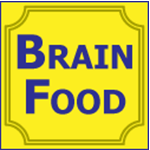You have no items in your shopping cart.
eBooklets with Test
Addiction: Alternatives to Abstinence - Ebooklet
Identifies the three major treatment models for addictive behaviors and a brief history of each: (a) the moral model, (b) the medical model, (c) the harm-reduction model. Describes the most recent research on the effectiveness of abstinence and harm-reduction addiction treatment programs and who each approach is best suited for. Lists protective behavioral strategies (PBS) used in moderating alcohol use among college students. Identifies the risk factors for “overdose” and list the strategies for prevention. Describes approaches to treating opioid dependence and the benefits and drawbacks of each.
$25.00
ADHD In Adults - Ebooklet
Identifies the rates of incidence and essentials of diagnosis of Attention Deficit Hyperactivity Disorder. Discusses the issues and controversies in diagnosis of adult ADHD. Describes the clinical essentials of differential diagnosis of ADHD in adults and presentations of other disorders with similar core symptoms. Identiies medications (stimulants and non-stimulants) that may be used in pharmacological management of ADHD in the adult population. Discusses the recent developments in the field of non-stimulant medications for adult ADHD, including cholinergic drugs and atypical antidepressants.
$25.00
Anti-Anxiety Drugs - Ebooklet
Outlines the diagnostic issues of various anxiety disorders including GAD, panic disorder, OCD, and social phobia. Identifies differentials of anxiety disorders and the nomenclature of phobias and related conditions. Describes commonly used pharmacological agents and their interactions, side effects, and expected effects. Addresses the issue of co-administration of these drugs with dental drugs. Identifies approaches to co-management of anxiety and depression, anxiety and alcohol-related disorders, and acute toxicity of benzodiazepines.
$25.00
Brain & Stress: PTSD & Adjustment Disorder - Ebooklet
Explains the principles of diagnosis and differential diagnosis of Adjustment Disorder, the controversy that surrounds its classification, and its proper place in the hierarchy of psychiatric disorders. Identifies helpful strategies for patients with Adjustment Disorder. Outlines the issues of diagnosis and management of Post-Traumatic Stress Disorder. Describes Shared Psychotic Disorder and its diagnosis and treatment. Describes ways to cope with stress and recommends appropriate coping strategies to patients.
$25.00
Brain Food - Ebooklet
Discusses how foods and vitamins may improve memory and brain function. Describes how the DASH and Mediterranean diets may play a key role in brain health. Explains how food choices and supplements may play a role in Alzheimer’s disease and brain aging. Describes an optimal diet for brain health.
$25.00
Cancer Prevention - Ebooklet
Describes the role tobacco plays in various kinds of cancers. Identifies the impact of estrogens, and viral and bacterial pathogens, on the development of cancer. Describes the lifestyle and dietary changes that can help prevent the development of cancer. Discusses the benefits and drawbacks associated with some of the tools used to screen for cancer. Identifies the role of chemopreventive agents, and how they may be able to curtail the onset of cancer, or its recurrence.
$25.00
Chronic Pain Disorders & Treatments - Ebooklet
Describes some of the effects of chronic pain on the brain. Lists the major chronic pain disorders and their treatments. Explains the differences between migraine and tension headaches. Identifies the major sources of back pain and their effective treatments. Describes the differences between trigger points and tender points. Lists methods and techniques of lowering the risk of chronic pain disorders. Discusses the concept of multidisciplinary pain management. Describes the applications of non-pharmacologic pain treatments like cognitive-behavioral therapy, biofeedback, and meditation.
$25.00
Diabetes - Ebooklet
Describes the key features of prediabetes, type 1, type 2, and gestational diabetes. Identifies the hormones involved in blood glucose control. Identifies the main macrovascular and microvascular complications of diabetes and describe their underlying pathology. Describes the diagnostic tests for diabetes and outline the values defining normal and abnormal results. Outlines the pharmacologic agents and lifestyle changes in the management and prevention of diabetes.
$25.00








